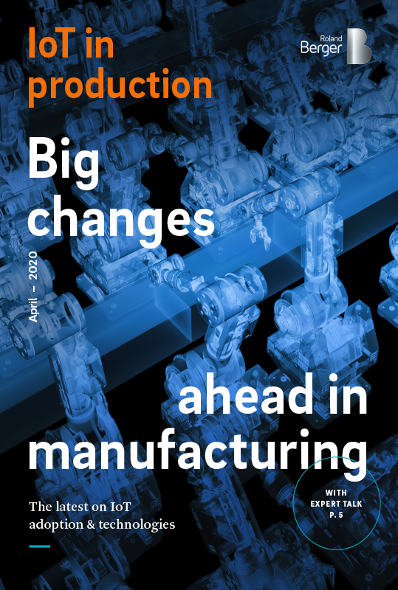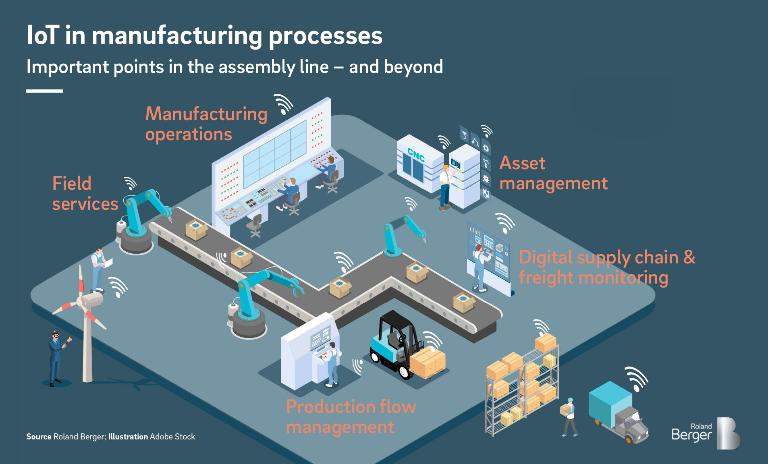IoT in production: challenges and opportunities for OEMs
![{[downloads[language].preview]}](https://www.rolandberger.com/publications/publication_image/Roland_Berger_624_IoT_in_Production_Cover.jpg_download_preview.png)
Over the next decade, IoT will drive most of the production processes. What are the main IoT challenges and where are the opportunities for OEMs?


Over the next decade, IoT will drive most of the manufacturing processes – from product development, manufacturing and production , to customer service. However, IoT implementation can be a complex process, with many OEMs already facing several issues. In this paper, Roland Berger gives insights on challenges and opportunities for OEMs, as well as key technologies that drive IoT.
Instead of creating IoT solutions based on customer needs, many companies fall into the trap of developing the existing knowledge. In order to offer real value, the product development must instead put the customer at the centre.
"For an IoT business model to succeed, it is essential to put the customer needs for each solution first."
The three key technologies that accelerate the use and dissemination of IoT in production industries are: Edge devices, low-power wide-area networks (LPWANs), and 5G. These technologies will transform the OEM product development, by allowing for improvements like reduced latency and bandwidth costs, connecting multiple low-cost and long-life devices or an increased speed without network congestion.
The new technologies will even enable those products to send data to a cloud without necessarily having to use conventional industrial communication networks. This will allow OEMs to analyze their products while in operation, which, in turn, will lead to better evolutions in production, higher customer satisfaction and more reliable products.
A closed life cycle data and information loop between product engineering and product operations will help OEMs improve future product evolutions in a process known as integrated engineering. IoT breaks existing data silos between OEMs and end users and replaces them with a shared information model, which can be used to develop holistic AI models.
When it comes to IoT, there is a lot of disorientation amongst companies and customers. With the vital role that IoT will play in Industry 4.0 over the next decade, it is crucial that this technology is being implemented – and that it is introduced on an evolutionary basis, not a revolutionary one. Roland Berger supports its clients by combining expertise in strategy development with in-depth industry and technology knowledge based on experience from numerous IoT projects.

![{[downloads[language].preview]}](https://www.rolandberger.com/publications/publication_image/Roland_Berger_624_IoT_in_Production_Cover.jpg_download_preview.png)
Over the next decade, IoT will drive most of the production processes. What are the main IoT challenges and where are the opportunities for OEMs?
